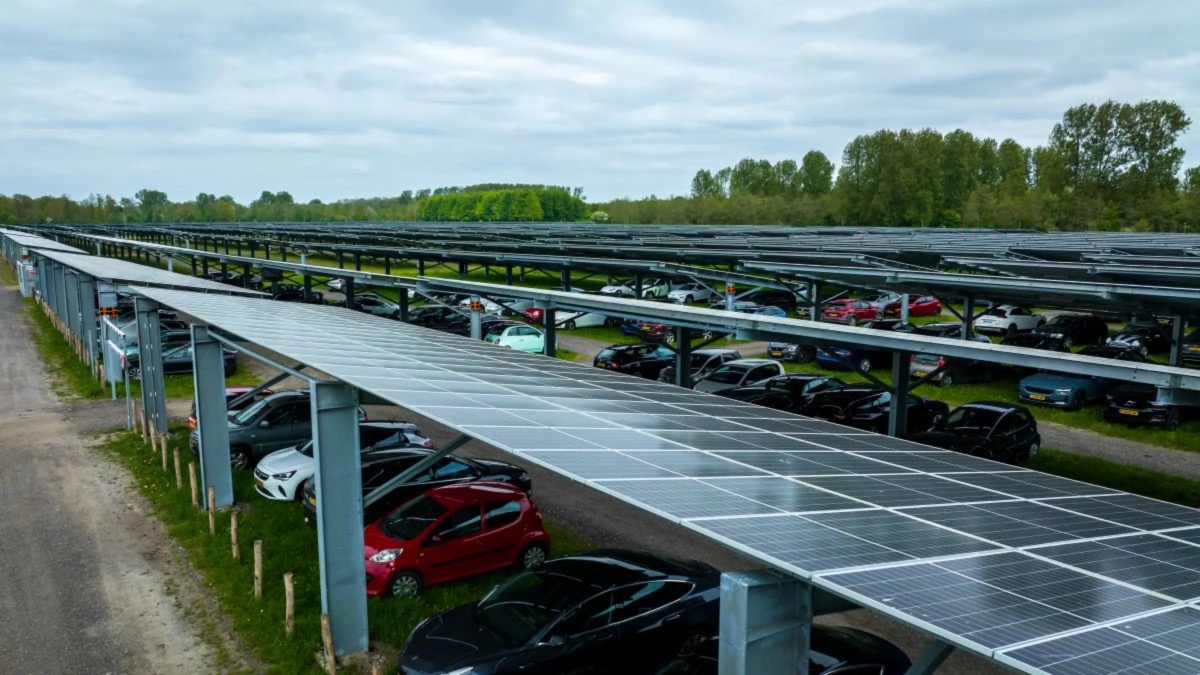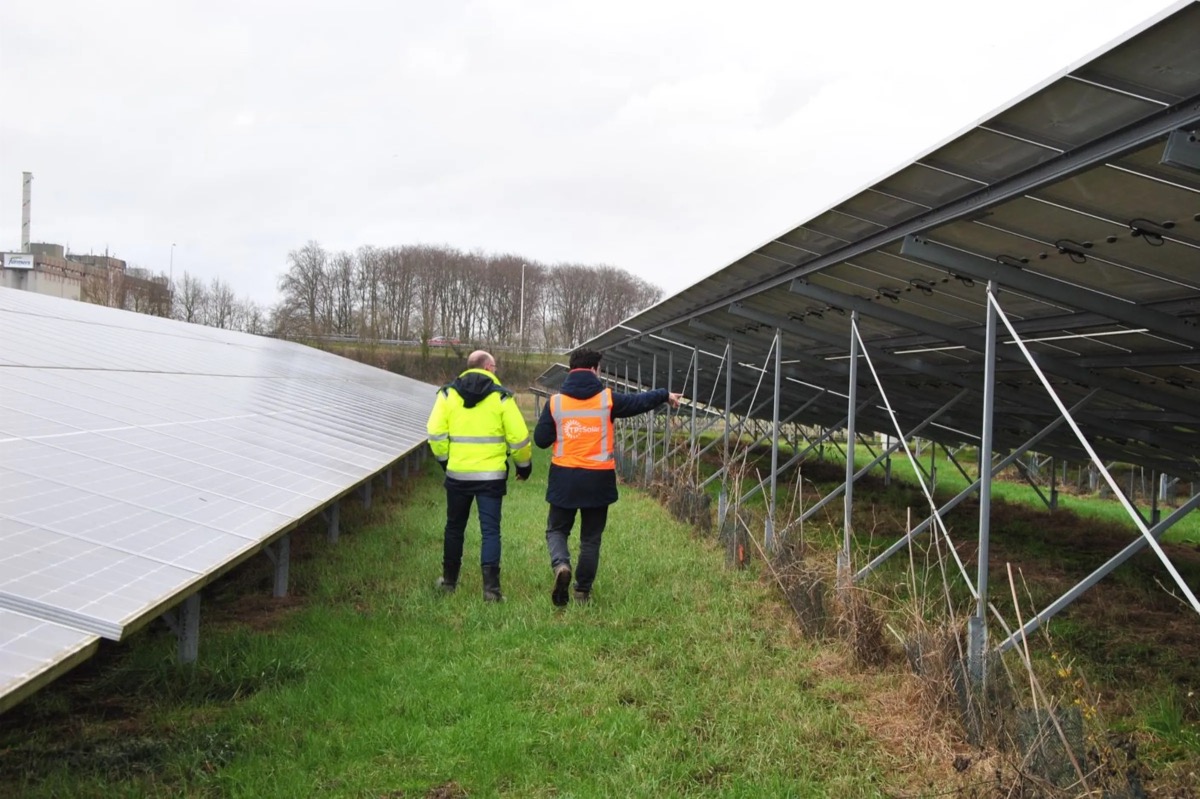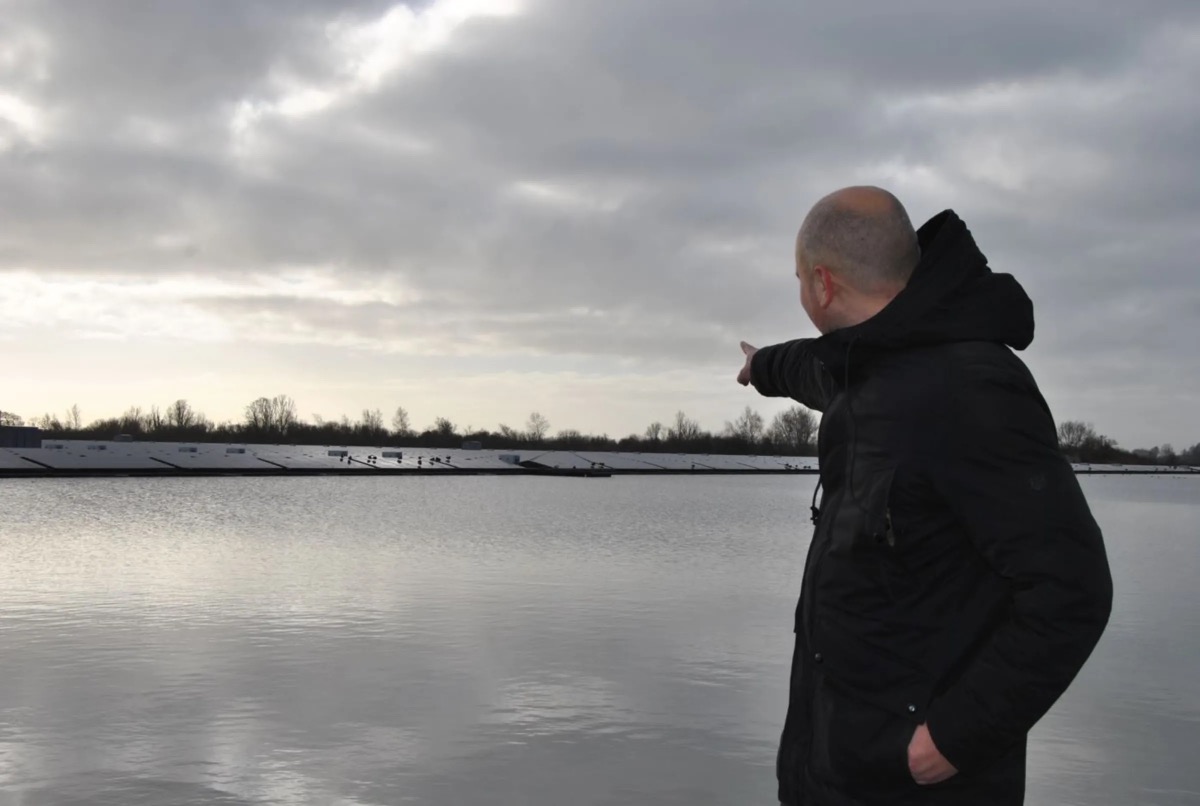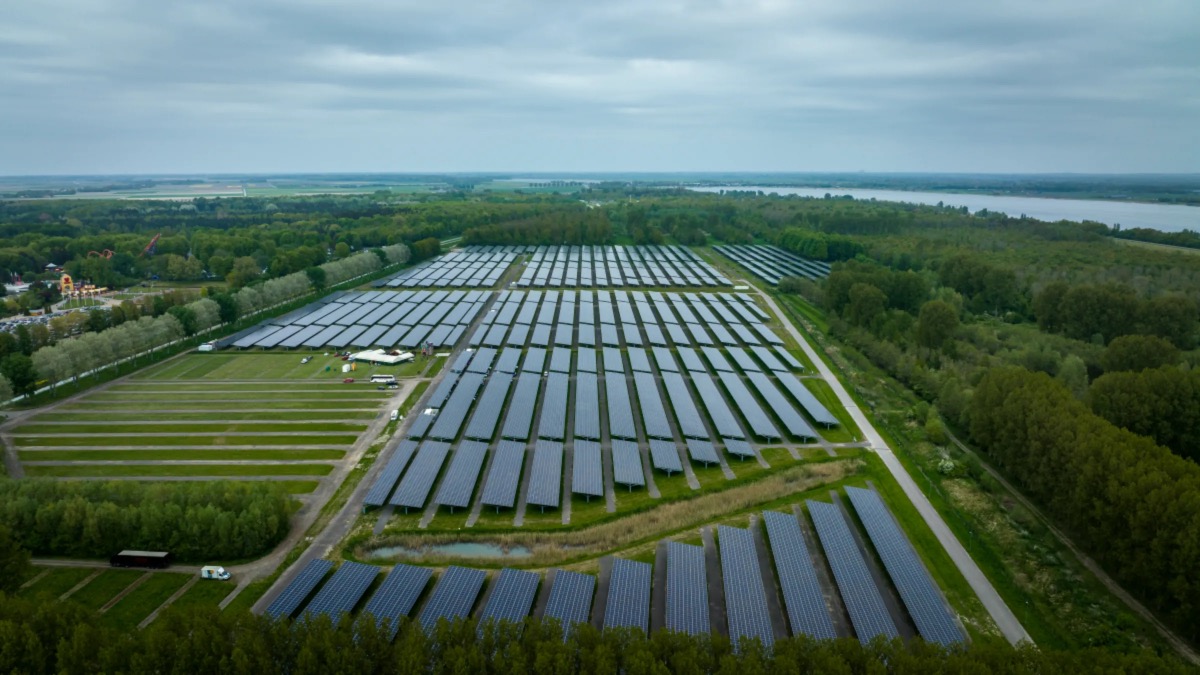
The Netherlands, Europe’s solar panel leader, is finding innovative places to site solar projects on limited land. KAROLIN SCHAPS, of Thomson Reuters Foundation, reports…
Amsterdam, The Netherlands
Thomson Reuters Foundation
In the Dutch countryside about 130 kilometres east of Amsterdam, an unusual-looking hill towers and glistens above farmhouses, leafless trees, and muddy grassland.
The hill – 25 metres tall – is built from 15 years’ worth of household and business waste. What’s remarkable is what’s covering it: 23,000 solar panels.

Solar Carport Biddinghuizen in Biddinghuizen, the Netherlands, PICTURE: Solarfields/Handout via Thomson Reuters Foundation
Dutch solar developer TPSolar opened the array, which can produce up to 8.9 megawatts of power, in Armhoede, in the east of the Netherlands, in mid-2020. The former landfill now generates enough electricity for about 2,500 households.
The project reflects a wider drive in the Netherlands – which now has more than 48 million solar panels installed – to find innovative places to put new renewable energy capacity.
“Because we have so little space in the Netherlands, it’s important to use the ground for multiple reasons. We have to be innovative and creative so we can produce the electricity the Netherlands needs to go green.”
– Bernd Nijen Twilhaar, a coordinator at Dutch solar developer Solarfields.
With land for renewable energy siting short nearly everywhere around the world, the Dutch experience – including putting solar on car parks, commercial lakes, sheep grazing fields, strawberry farms, disused churches, train stations and airfields – could inspire better siting of renewables globally.
“Because we have so little space in the Netherlands, it’s important to use the ground for multiple reasons,” said Bernd Nijen Twilhaar, a coordinator at Dutch solar developer Solarfields, which manages large solar farms and has installed at least 450,000 panels in the country.
“We have to be innovative and creative so we can produce the electricity the Netherlands needs to go green,” he added.
The Netherlands today has an average of two solar panels per inhabitant – and installed capacity of more than one kilowatt per person – making it Europe’s per-capita solar powerhouse, according to industry association Solar Power Europe.
Solar developers and analysts say the expansion has been driven by a huge drop in equipment prices, an effective energy subsidy scheme, and ambitious government targets to reduce greenhouse gas emissions.
The government aims to make 70 per cent of its electricity renewable by 2030, mainly through expanding solar and wind power capacity as it seeks to cut its emissions as one of Europe’s top six polluting countries.
Like many European Union nations, the Netherlands is cutting energy reliance on Russia following its invasion of Ukraine.
Dutch solar and wind farms have helped fill the electricity supply gap left by gas-fired power stations that have became unprofitable to run amid record-high gas prices.
But the Netherlands’ farmland is among the most expensive in the EU, making finding space for solar plans costly.
That reality, combined with the country’s high population density, means solar firms have had to be inventive when it comes to finding space.

TPSolar’s Barry Lamers (left) and Robert van der Horst at solar park Berkelweide in Lochem, The Netherlands, on 30th January, 2023. PICTURE: Thomson Reuters Foundation/Karolin Schaps
In recent years, the Netherlands has enshrined climate targets like its renewable energy goal into law, vowed to limit onshore gas and oil drilling, and boosted green spending generally. The nation’s 2022 renewable energy budget was €13 billion.
Last year, the Netherlands generated 14 per cent of its electricity from solar farms – up from one per cent in 2015 – overtaking coal-fired power generation for the first time.
The proportion of electricity from solar was the highest generated in the EU, said Ember Climate, a consultancy group.
In parallel, the country’s “net metering” system – set up in 2004 and allowing households with solar panels to offset their green electricity production against their consumption – now has more than two million homes generating renewable power, according to the energy ministry.
The Dutch Government is assessing how site planning and financial support can be altered to encourage more construction of solar farms better integrated into the landscape, an energy ministry spokesman said by email.
Joeri Jacobs, who focuses on building green energy projects at waste management company Afvalzorg, described the Dutch approach to renewables as “extremely MacGyver-ish” – referring to a 1980s US TV show about a resourceful secret agent who assembled ingenious devices from everyday objects.
“We take the different energy technologies, we stack them and we try to make a combination that really works,” said Jacobs, whose company has teamed up with a local utility to turn disused landfill sites into solar farms.
“It takes a while but once everybody hops on the train we actually execute relatively quickly in the Netherlands.”
Solar Carport Biddinghuizen in Biddinghuizen, The Netherlands, on 3rd May, 2022. PICTURE: Solarfields/Handout via Thomson Reuters Foundation
Nearly 20 per cent of the low-lying country’s surface is water, and solar power developers including GroenLeven have taken advantage by installing farms on man-made lakes.
The company has installed more than 500,000 solar panels on Dutch waters, leaving the Netherlands behind only China globally in such siting, it noted.
“This idea of floating solar came up in the Netherlands earlier than in other countries,” said Benedikt Ortmann, global director of solar projects at German renewable energy company BayWa re, which acquired GroenLeven in 2018.
Inspired by the Dutch example, BayWa re said it now is rolling out more floating solar sites in European countries such as Belgium, Austria and France.
We rely on our readers to fund Sight's work - become a financial supporter today!
For more information, head to our Subscriber's page.
Dutch firms are also looking for ways to make solar plants work alongside agricultural production.
“Rather than having to fight over who’s going to get the access to the land, we come up with solutions to jointly use it,” said Carel Kooij, business development manager for large-scale photovoltaic at the Dutch subsidiary of Swedish utility Vattenfall.
One so-called “Agri-PV” project involves growing strawberries and raspberries below a solar panel roof, replacing the plastic cover traditionally used by farmers.
Halfway through a four-year pilot, project leaders said the plants needed 25 per cent less water because they were sheltered from the sun, potentially saving irrigation water in a future where climate change brings hotter and drier summers.

GroenLeven’s Maarten de Groot points at the company’s Nij Beets floating solar farm at Nij Beets, the Netherlands, on 26th January, 2023. PICTURE: Thomson Reuters Foundation/Karolin Schaps
Across the board, Dutch solar developers say new projects must be conceived with local interests firmly in mind.
The country’s 2019 climate plan, for instance, stipulates that renewable energy projects should aim to allocate 50 per cent of the green energy they produce to local inhabitants.
While this is not legally binding, developers tend to invest in the community – from sending a percentage of renewable power generated to local energy cooperatives, for example, or setting up a socioeconomic fund to make energy efficiency improvements.
“Because the Netherlands is so small, you are always working in someone’s backyard,” said Robert van der Horst, project developer at TPSolar.
“You always have to talk to the people and discuss what is best for a certain area,” he added. “Then you try to enhance that with your solar farm.”







